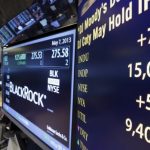Gold recovered after falling to the lowest in nearly two weeks as investors assessed mixed economic data from the US and weighed increased physical demand from Asia against the alleged conclusion of Feds Quantitative Easing program. Copper rose on speculation strike action will curb supply. A weaker dollar benefited both metals.
Comex gold for delivery in December traded at $1 229.9 per troy ounce at 14:18 GMT, up 0.05% on the day, having shifted within a daily range of $1 222.2 – $1 235.5. The precious metal lost 0.20% to $1 229.3 an ounce on Monday.
The Federal Open Market Committee is holding its seventh meeting this year on Tuesday and Wednesday, where policy makers are expected to end Fed’s monthly bond-buying program. Investors will be paying close attention to Janet Yellen’s after-meeting statement, looking for hints about a rate increase and the central bank’s opinion on the global economy.
“People are nervous ahead of the FOMC and big position changes are unlikely. For the moment, I think we will hold between $1,220 and $1,240,” a Hong-Kong trader said for CNBC.
Physical demand from Asia kept the market underpinned. China’s net gold imports from main conduit Hong-Kong reached a six-month high in September as the country prepared to celebrate its National Day holiday in the beginning of October. Usually demand from China and India, the biggest gold consumers, jumps in the fourth quarter as people enjoy the festive and wedding season.
India celebrated Dhanteras, the biggest gold-buying festival, last Tuesday, while Diwali, the festival of lights, was celebrated on Thursday.
US data
Mixed data from the US pressed the US dollar lower. The Department of Commerce’s Census Bureau reported that durable goods orders in the US unexpectedly dropped in September on lower demand for machinery and computers.
Bookings for goods meant to last more than three years fell 1.3% on a monthly basis in September, following an upward-revised 18.3% decline in August. Analysts had projected a 0.5% gain.
Core durable goods orders, which exclude bookings for the more volatile transportation items, fell 0.2% after a 0.7% jump in August, defying analysts’ projections for a 0.5% jump. Orders for non-defense capital goods excluding aircraft, a gauge for future business investment in items such as engines, computers and communications equipment, fell 1.7%, the most since January, following a downward-revised 0.3% gain in the preceding month.
A separate report showed that home prices in 20 US cities rose at a slower pace in the year ended August. The S&P/Case-Shiller House Price Index registered a 5.6% gain in August from a year earlier, compared to a 6.7% jump in the year ended July. Analysts had projected a 5.8% increase. Month-on-month, prices were up 0.2%, trailing a projected 0.5% advance.
Sentiment at multi-year high
On the bright side for the US economy, confidence among US consumers rose in October to the highest in seven years as the labor market continued to improve, while gasoline prices declined.
The Conference Board reported that its consumer sentiment index surged to 94.5, the highest since October 2007, defying analysts projections for a drop to 87.0. Septembers reading received an upward revision to 89.0 from initially estimated at 86.0.
The US dollar index for settlement in December fell to a one-week low of 85.290 earlier in the session and stood at 85.420 at 14:18 GMT, down 0.16% on the day. The US currency gauge slid 0.3% on Monday to 85.561.
Copper
Copper rose for a fourth day and held near the highest level in two weeks as news for upcoming strikes at two major mines, coupled with expectations of higher Chinese demand, eased speculations for an expanding supply surplus. A weaker dollar was also beneficial.
Comex copper for delivery in December traded 0.72% higher at $3.0860 per pound at 14:18 GMT, having earlier touched a two-week high of $3.0930. The industrial metal rose by 0.76% on Thursday to $3.0640, marking its third straight daily gain.
The metal extended its advance after a Freeport-McMoRan Inc. union official said yesterday that workers at the Grasberg mine in Indonesia will hold a one-month strike, starting November 6th, due to management issues related to a fatal accident.
Meanwhile, workers at the biggest copper mine in Peru, Antamina, which is owned by BHP Billiton, Glencore Xstrata, Mitsubishi and Teck, will walk out indefinitely as of November 10th, Reuters reported on Friday. This would bring offline a total capacity of 30 000 tons per month.
The metal also drew support on the demand side after industrial profits in China rose by an annualized 0.4% in September, partially offsetting a 0.6% decline in August.
Last week, a preliminary gauge showed industrial production and activity in China’s manufacturing sector expanded more than expected, while the Eurozone also posted slightly better-than-projected data, although the picture in the single currency bloc remains grim.





